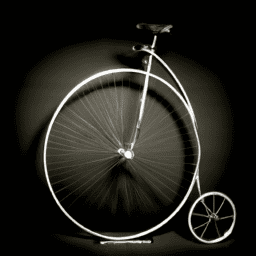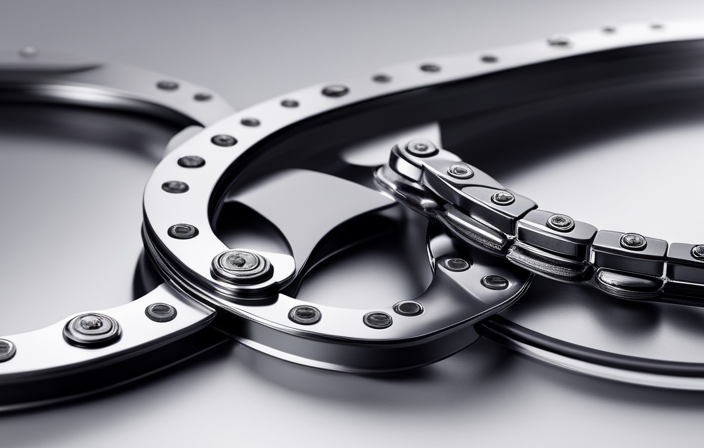Are you aiming to transform your biking experience? If that’s the case, you’re in the perfect spot! In this discussion, we’re diving into the latest breakthrough in bike technology: hydraulic bicycle transmissions. This groundbreaking innovation is poised to overhaul the bicycle sector and simplify cycling like never before.
We’ll be discussing the benefits of hydraulic bicycle transmissions, how it benefits metropolitan areas, and how it makes biking easy. So, rethink your biking experience and stay tuned for more on hydraulic bicycle transmissions!
The Benefits of Hydraulic Bicycle Transmissions
Hydraulic bicycle transmissions are becoming increasingly popular among cyclists due to the many benefits they offer over traditional mechanical transmissions. Here are some of the benefits of hydraulic bicycle transmissions:
- Smooth shifting: Hydraulic transmissions provide smoother shifting than mechanical systems, which can be jerky and less precise. The hydraulic fluid offers a consistent and smooth shift, translating into a more comfortable and efficient ride.
- Less maintenance: Hydraulic systems require less maintenance compared to mechanical systems. They don’t require regular adjustments or lubrication, which reduces the time and money spent on maintenance.
- Better performance in extreme conditions: Hydraulic systems perform better in extreme weather conditions, such as wet or muddy terrain. The hydraulic fluid is less susceptible to the build-up of dirt and debris, which can cause mechanical systems to fail or operate less efficiently.
- More efficient power transfer: Hydraulic systems have a more efficient power transfer compared to mechanical systems. The hydraulic fluid transfers the power more directly, resulting in less energy loss during shifting. This means that the rider can maintain a more consistent power output, resulting in a faster and more efficient ride.
- Reduced hand fatigue: Hydraulic systems require less force to shift, which reduces hand fatigue and strain on long rides. The consistent and smooth shifting also reduces the need for sudden and forceful movements, which can cause hand fatigue and discomfort.
- Reduced weight: Hydraulic systems are generally lighter compared to mechanical systems. This weight reduction can improve the bike’s overall performance, making it easier to accelerate and climb hills.
Overall, hydraulic bicycle transmissions offer a range of benefits that make them a popular choice for many cyclists. They provide smoother shifting, require less maintenance, perform better in extreme conditions, offer more efficient power transfer, reduce hand fatigue, and reduce weight. These benefits can result in a more comfortable, efficient, and enjoyable ride.
The Next Big Thing In Bicycle Transmissions
Bicycle transmissions have been around for a while, but they’ve always been powered by traditional drivetrains. Those days are coming to an end, though. hydraulic bicycle transmissions are the next big thing in bicycle transmissions and they’re set to revolutionize the industry. Here are just some of the benefits that riders will enjoy with this technology:.
- Hydraulic bicycle transmissions enable riders to shift quickly and precisely by squeezing a brake lever. This allows for increased power output due to the low range of gearing, enabling riders to go faster downhill and climb hills with greater ease.
- Increased control of downhill speeds and enhanced uphill performance is another common benefit of using hydraulic systems. Riders who use these systems can easily adjust their speed while riding, which makes it safer for everyone on the bike course.
- Maintenance and operational costs are lowered with hydraulic systems compared to traditional drivetrains because they require less maintenance over time. Plus, because these systems add weight to the bike, manufacturers typically have lower operational costs due to reduced shipping costs associated with heavier equipment.
- Productivity can be improved since riders can shift faster and go longer distances faster than when using a traditional drivetrain. In addition, improved safety is often a result of increased ability shift quickly – essential for cyclists who participate in races or commute on busy streets daily.
Overall, hydraulic bicycle transmissions represent a revolutionary change in how bicycles are powered and controlled – something that will benefit riders and manufacturers alike in the years ahead.
Revolutionizing the Bicycle Industry
Hydraulic bicycle transmissions are a type of drivetrain system that uses hydraulic fluid to transmit power from the pedals to the rear wheel of a bicycle. They are similar to traditional mechanical drivetrains, which use chains and gears to transfer power but offer several advantages over mechanical systems.
One of the main benefits of hydraulic bicycle transmissions is that they are more efficient than mechanical systems. Because the hydraulic fluid is incompressible, it can transmit power more efficiently than a chain, which can stretch and flex. This can result in improved performance and reduced wear on the drivetrain.
Hydraulic bicycle transmissions are also easier to maintain than mechanical systems. They do not require frequent lubrication and are less prone to wear and tear. This can result in lower maintenance costs and fewer repairs over the bike’s lifetime.
Another advantage of hydraulic bicycle transmissions is that they offer improved shifting performance. Because the system is sealed and does not require manual adjustment, shifting is smooth and consistent, even under load.
Overall, hydraulic bicycle transmissions are a modern, high-performance alternative to traditional mechanical drivetrains. They offer improved efficiency, easier maintenance, and better shifting performance, making them an appealing option for serious cyclists.
Hydraulic Bicycle Transmissions
Hydraulic bicycle transmissions, which are relatively new, are hydraulic bicycle transmissions. They are activated by a fluid that flows through tubes within the bike frame. The fluid flows through tubes inside the bike frame and then through a hydraulic motor, which rotates it.
This technology is still new, but it is quickly catching up. It is also easier to use and maintain than a mechanical system.
Some hydraulic systems require more care than others. Some cables may need to be routed through complicated internal routing pathways. Water can also contaminate cables and housings.
However, a hydraulic system’s main function is to transfer power. The hydraulic motor turns the wheel by pumping pressurized liquid through tubes.
The fact that it is a closed system is another appealing feature of this form of transmission. It prevents the cable from becoming stretched or contaminated. It also allows for more creativity in addition to that.
The system’s low pressure is another advantage. It can operate at a wide range of temperatures as a result.
How Hydraulic Bicycle Transmissions Benefit Metropolitans
In today’s world, there is a growing demand for hydraulic bicycle transmissions. These transmissions offer many benefits that can improve the quality of life for urban riders. Let’s take a closer look at some of the benefits of using a hydraulic transmission on your bike.
For starters, hydraulic bicycle transmissions allow for smoother and better control. This means that you’ll have less difficulty keeping up with traffic and you’ll be able to make more precise turns. Additionally, a decrease in bike maintenance costs due to more extended transmission durability is another major benefit of using a hydraulic transmission. With longer transmissions lasting up to 10,000 miles, you’ll save money in the long run by not having to replace them as often.
Another great advantage of using a hydraulic transmission is low noise operation as compared to conventional gear setups. This means you won’t have to worry about waking up your neighbors or causing an undue disturbance while riding your bike.
In addition, improved power assist technology with intuitive gear optimization, constant pressure, smooth shifting, and customizable gear selection makes cycling more accessible and more comfortable than ever. Greater overall efficiency due to higher torque stabilizing and advanced transmission level assistance also contributes to the quiet ride quality of hydraulic bicycle transmissions.
Last but not least are safety-enhancing features like adjustable gearing on a single-speed machine and fewer external moving parts. These features help ensure that even novice riders can safely use these transmissions without any trouble whatsoever. In addition, conveniently located shifters provide easy access to shifting while riding, enhancing rider comfort and control in congested urban settings.
Biking With Ease How The New Hydraulic Transmission Makes It Possible
Bicycling is a great way to get exercise and have fun simultaneously. However, cycling can be difficult and tiring using a traditional bike transmission. That’s why hydraulic bicycle transmissions are so exciting – they offer increased safety, efficiency, and aesthetics while reducing maintenance costs and risks. Here are some of the benefits of using this technology:.
First, hydraulic bicycle transmissions offer increased safety because they provide greater stopping power. This means you’ll be able to stop more quickly on the roads, making it easier to avoid accidents. In addition, since the transmission is self-contained and sealed, there’s less risk of mechanical failure due to wear and tear.
Next, hydraulic bicycle transmissions are more efficient than traditional bike transmissions. This means that you’ll be able to ride longer distances with less effort. Plus, since the shifting is faster than with traditional bike transmissions, you’ll spend less time on the bike struggling with gear changes.
Finally, hydraulic bicycle transmissions look more modern than traditional bike transmissions. This makes your cycling experience look more sleek and stylish – something everyone will admire! In addition, this technology offers increased torque for climbing hills or going fast downhill – making biking an even more enjoyable experience for those who enjoy strenuous exercise sessions.
Final Thoughts
Hydraulic bicycle transmissions are the future of biking in urban areas, providing a more efficient and comfortable ride. With increased power, ease of shifting gears, and reduced maintenance, this technology is sure to revolutionize urban biking for years to come. So, if you’re looking for an easier way to get around town, why not try hydraulic bicycle transmissions? You’ll be glad you did!
















